INSTITUT SUPERIEUR D'ANTHROPOLOGIE
INSTITUTE OF ANTHROPOLOGY
ONLINE COURSES / COURS A DISTANCE
FALL TERM : OCTOBER 2013
REGISTER NOW
CHINE – 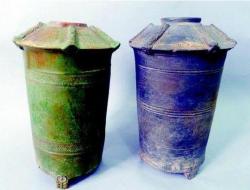 Fengxiang - Archaeological finds are often made accidentally, and these days often occur during construction work. That’s what happened recently to a farmer in Fengxiang county in Shaanxi Province. While building his house, he happened upon a Han dynasty tomb dating back some two thousand years. And both the tomb and the pottery it contains are in very good condition. It’s not the first time that ancient tombs have been found in Fengxiang county, located near Xi’an, the famed capital of both the Han and Tang dynasties. But this one is special. Li Wansuo, village leader of LiJiapu Village, said, “Last Friday, when the villager was fetching earth from the nearby cliff, he dug out some bricks, then dug deeper, and found that it was a tomb with some pottery inside it.” The tomb has turned out to be astonishingly well preserved, despite extreme weather, war, construction, anything that happened in the past two thousand years. The arch shaped ceiling and the tomb’s chamber are neatly built with light blue bricks. And on top of that, fourteen metal coins and fourteen works of finely crafted pottery have also been found. They include containers, pots, a wine cup, one mini cooker and two mini storehouses, which all provide clues to the tomb’s age. Cao Jianning, vice director of Fengxiang Museum, said, “From the shapes of the pottery, the coins and the shape of the tomb, we have concluded that the tomb was built in the early years of the western Han dynasty.”
Fengxiang - Archaeological finds are often made accidentally, and these days often occur during construction work. That’s what happened recently to a farmer in Fengxiang county in Shaanxi Province. While building his house, he happened upon a Han dynasty tomb dating back some two thousand years. And both the tomb and the pottery it contains are in very good condition. It’s not the first time that ancient tombs have been found in Fengxiang county, located near Xi’an, the famed capital of both the Han and Tang dynasties. But this one is special. Li Wansuo, village leader of LiJiapu Village, said, “Last Friday, when the villager was fetching earth from the nearby cliff, he dug out some bricks, then dug deeper, and found that it was a tomb with some pottery inside it.” The tomb has turned out to be astonishingly well preserved, despite extreme weather, war, construction, anything that happened in the past two thousand years. The arch shaped ceiling and the tomb’s chamber are neatly built with light blue bricks. And on top of that, fourteen metal coins and fourteen works of finely crafted pottery have also been found. They include containers, pots, a wine cup, one mini cooker and two mini storehouses, which all provide clues to the tomb’s age. Cao Jianning, vice director of Fengxiang Museum, said, “From the shapes of the pottery, the coins and the shape of the tomb, we have concluded that the tomb was built in the early years of the western Han dynasty.”
http://www.kaogu.cn/en/detail.asp?ProductID=4254
PAKISTAN – 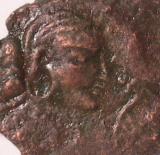 Kashmir Smast - A team of eight archaeological researchers from Universiti Sains Malaysia (USM) has been chosen to conduct a long-term study of the Kashmir Smast which includes a series of natural limestone caves within the early Gandharan civilisation site in Pakistan. The Ghandaran civilisation existed from the second to the sixth century. The study covers a complete magnetic anomaly mapping of the Kashmir Smast Cave (also known as the Great Cave), the Kashmir Smast monastery, the spring water tank and the great water tank. It will take between three and five years to complete the mission. In March 2010, the researchers in USM created history when they discovered the site of the earliest civilisation in South-East Asia. The site, dating back to the second century, was located in Sungai Batu near the Bujang Valley in Kedah. Dr Mokhtar said the team chose to research the Kashmir Smast as its age wave was quite similar to the Sungai Batu site. “We hope to compare the Sungai Batu civilisation, which has people accustomed to the marine life, with that of the Kashmir Smast whose people adapted to their hilly location.”
Kashmir Smast - A team of eight archaeological researchers from Universiti Sains Malaysia (USM) has been chosen to conduct a long-term study of the Kashmir Smast which includes a series of natural limestone caves within the early Gandharan civilisation site in Pakistan. The Ghandaran civilisation existed from the second to the sixth century. The study covers a complete magnetic anomaly mapping of the Kashmir Smast Cave (also known as the Great Cave), the Kashmir Smast monastery, the spring water tank and the great water tank. It will take between three and five years to complete the mission. In March 2010, the researchers in USM created history when they discovered the site of the earliest civilisation in South-East Asia. The site, dating back to the second century, was located in Sungai Batu near the Bujang Valley in Kedah. Dr Mokhtar said the team chose to research the Kashmir Smast as its age wave was quite similar to the Sungai Batu site. “We hope to compare the Sungai Batu civilisation, which has people accustomed to the marine life, with that of the Kashmir Smast whose people adapted to their hilly location.”
http://www.thestar.com.my/News/Nation/2013/07/11/USM-archaeologists-to-study-Kashmir-Smast.aspx
FRANCE – 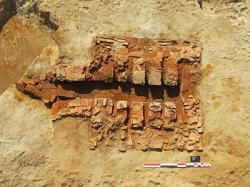 Hégeney - La fouille de la ZAC d’Hégeney (Bas-Rhin, 67) a permis la découverte d’un four de tuilier gallo-romain en 2013. Les fondations du four sont conservées : la structure de chauffe se présente selon un plan rectangulaire. Un canal central, prolongation d’un alandier, distribue la chaleur dans des conduits perpendiculaires, séparés par des arcs supportant la sole et le laboratoire. L’ensemble est construit en usant de terres cuites architecturales (tegulae, imbrices, tubuli, briques de pilettes d’hypocaustes).
Hégeney - La fouille de la ZAC d’Hégeney (Bas-Rhin, 67) a permis la découverte d’un four de tuilier gallo-romain en 2013. Les fondations du four sont conservées : la structure de chauffe se présente selon un plan rectangulaire. Un canal central, prolongation d’un alandier, distribue la chaleur dans des conduits perpendiculaires, séparés par des arcs supportant la sole et le laboratoire. L’ensemble est construit en usant de terres cuites architecturales (tegulae, imbrices, tubuli, briques de pilettes d’hypocaustes).
http://www.antea-archeologie.com/news/8/92/Un-four-de-tuilier.html
CAMBODGE – 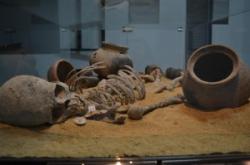 Phum Sophy - A new exhibition has opened at the National Museum of Cambodia in Phnom Penh. The exhibit entitled “Origins of Empire. Cambodia’s Prehistoric Past: Archaeological Remains from Phum Sophy” opened Tues 9th July at the National Museum Cambodia and closes in late September 2013. The exhibition highlighted the mortuary tradition and material culture of the Iron Age site of Phum Sophy (c. AD 300), providing a unique glimpse into life before the rise of the Angkorian Empire. “Little is known of Cambodia before Angkor and research of this kind is important” said O’Reilly, also the founder of the NGO, Heritage Watch, which works to preserve Cambodia’s prehistoric past. “Unfortunately much of the site of Phum Sophy was looted in 2003 and we have worked closely with the Ministry of Culture and Fine Arts to promote the preservation of this important heritage.” The exhibition details the research conducted to date including skeletal examination and chemical analysis of human teeth and showcases the beautiful burial offerings including exotic glass and stone beads, ceramics, metal artefacts and jewellery. Dr Shewan, the project’s chemical analysis expert, said “the data collected from the skeletal remains would allow the team to understand movement of prehistoric people, as teeth formed in childhood preserve a chemical signature that provides information about an individuals living environment during their early life”. The project also explored the unique jar burial sites in the Cardamom Mountains of Cambodia, led by Dr Nancy Beavan of the University of Otago.
Phum Sophy - A new exhibition has opened at the National Museum of Cambodia in Phnom Penh. The exhibit entitled “Origins of Empire. Cambodia’s Prehistoric Past: Archaeological Remains from Phum Sophy” opened Tues 9th July at the National Museum Cambodia and closes in late September 2013. The exhibition highlighted the mortuary tradition and material culture of the Iron Age site of Phum Sophy (c. AD 300), providing a unique glimpse into life before the rise of the Angkorian Empire. “Little is known of Cambodia before Angkor and research of this kind is important” said O’Reilly, also the founder of the NGO, Heritage Watch, which works to preserve Cambodia’s prehistoric past. “Unfortunately much of the site of Phum Sophy was looted in 2003 and we have worked closely with the Ministry of Culture and Fine Arts to promote the preservation of this important heritage.” The exhibition details the research conducted to date including skeletal examination and chemical analysis of human teeth and showcases the beautiful burial offerings including exotic glass and stone beads, ceramics, metal artefacts and jewellery. Dr Shewan, the project’s chemical analysis expert, said “the data collected from the skeletal remains would allow the team to understand movement of prehistoric people, as teeth formed in childhood preserve a chemical signature that provides information about an individuals living environment during their early life”. The project also explored the unique jar burial sites in the Cardamom Mountains of Cambodia, led by Dr Nancy Beavan of the University of Otago.
http://www.southeastasianarchaeology.com/2013/07/11/origins-of-empire-archaeological-remains-from-phum-sophy/#more-8565
GRECE – 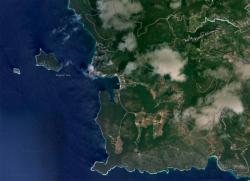 Skopelos - A previously unknown archaeological site has come to light during construction works of a water reservoir in Panormos of Skopelos, attracting the interest of the 13th Ephorate of Prehistoric and Classical Antiquities. The site probably dates to the Classical period, and lies at a distance of 1 km from two already known, significant archaeological sites, the acropolis and the lower city. The rescue excavations, conducted by the 13th EPCA, started last April. Since May, archaeological investigations have been intensified, and will last until the end of the year. The archaeologists’ main aim is to clarify the character and the specific features of the new archaeological settlement which has been revealed. The site has been located due to the abundance of the pottery fragments lying on the surface of the earth. The fragments were during the construction works of the water reservoir, as Director of the 13th EPCA, Argyroula Doulgeri-Intzesiloglou said. Up to now, the excavation has brought to light deposits, layers of earth containing pottery. No architectural remains have been found yet, such as walls of buildings, to help researchers specify if the site was an isolated settlement, a rural settlement or a small village. Surveys will further cover the neighboring hill, so that archaeologists gain a better understanding of the site and the finds, which probably date back to the 4th century BC and include fragments of amphorae and pottery of everyday use, possibly indicating a rural settlement of viniculture and wine production.
Skopelos - A previously unknown archaeological site has come to light during construction works of a water reservoir in Panormos of Skopelos, attracting the interest of the 13th Ephorate of Prehistoric and Classical Antiquities. The site probably dates to the Classical period, and lies at a distance of 1 km from two already known, significant archaeological sites, the acropolis and the lower city. The rescue excavations, conducted by the 13th EPCA, started last April. Since May, archaeological investigations have been intensified, and will last until the end of the year. The archaeologists’ main aim is to clarify the character and the specific features of the new archaeological settlement which has been revealed. The site has been located due to the abundance of the pottery fragments lying on the surface of the earth. The fragments were during the construction works of the water reservoir, as Director of the 13th EPCA, Argyroula Doulgeri-Intzesiloglou said. Up to now, the excavation has brought to light deposits, layers of earth containing pottery. No architectural remains have been found yet, such as walls of buildings, to help researchers specify if the site was an isolated settlement, a rural settlement or a small village. Surveys will further cover the neighboring hill, so that archaeologists gain a better understanding of the site and the finds, which probably date back to the 4th century BC and include fragments of amphorae and pottery of everyday use, possibly indicating a rural settlement of viniculture and wine production.
http://www.archaiologia.gr/en/blog/2013/07/11/previously-unknown-archaeological-site-located-on-skopelos/